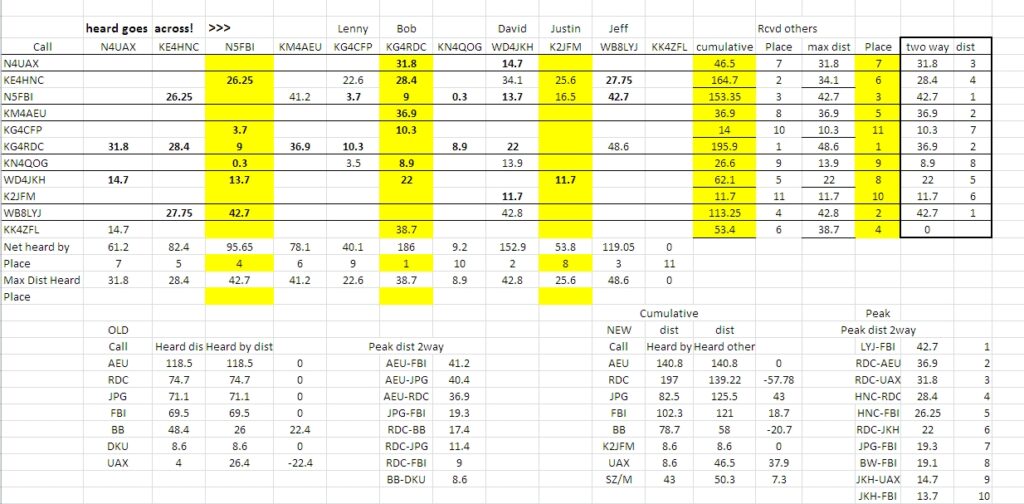Simplex Test
The next project will be a 75 meter “simplex test” to compare antennas.
The simplex test measures communications distance, both one-way and two-way, between every participating station.
- Everyone transmits in order of a list created at check-in on the repeater.
- Participants write down the callsign of everyone they copy solid enough to have a contact.
- We return to the repeater to exchange reports
- Participants must stay through the entire test, otherwise you will not be counted in final tally
To be fair to everyone the simplex test operates under the following rules:
- Everyone is welcome to participate but they must stay through the entire test to be counted
- Participant transmitter and receiver location must be the same as the FCC listed address, or you must supply the exact physical address
- The reports must be honest, They must include the callsign or some identifying trait (e.g. “I heard Jeff in Thomaston” ) of stations copied. We will clear the ID up on the repeater so don’t worry if you miss a callsign.
- If you need a repeat at any point or if the emcee misses anything please speak up immediately!
The goal of simplex tests is to compare our signals and motivate people to improve their systems. The simplex test is a form of friendly contest, much like our Wednesday night trivia.
This page will hold results like those below…
Simplex Test 2 Meters
This is the July 14th test.
In the sheet above, Google Earth Pro was used to find distance. One interesting part of this is the far right column in cumulative distance totals. This column indicates how well balanced different stations are between receiving and transmitting:
A zero is ideal.
A positive number indicates you receive better than you transmit, meaning you are a candidate for more transmitter power or more antenna system gain. (More on this on Tech Talk)
A negative number means you are an alligator. You transmit further than you receive, meaning you are a candidate for work on the receiving or you are simply using more power than you should for your receiving capabilities. .
Do not take the cumulative distance balance between receive and transmit as a sign your station can’t be improved. It simply indicates how well balanced your station is. Do not take the distances as an absolute indicator. Stations at far edges, like WB8LYJ or KE4AEU, have a better shot of long peak distance totals. Stations in the local cluster have a better shot at more cumulative distance.
75 Meter Test
This is the form for the 75 meter NVIS tests Saturday at noon. There is a separate station antenna and feedline page.

